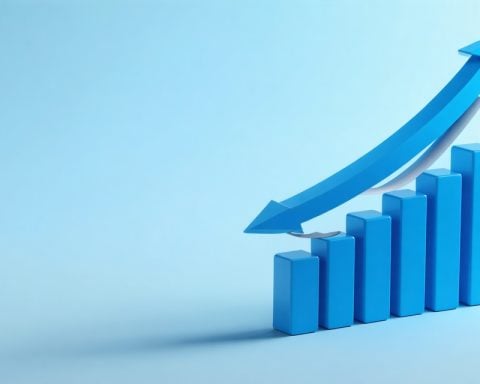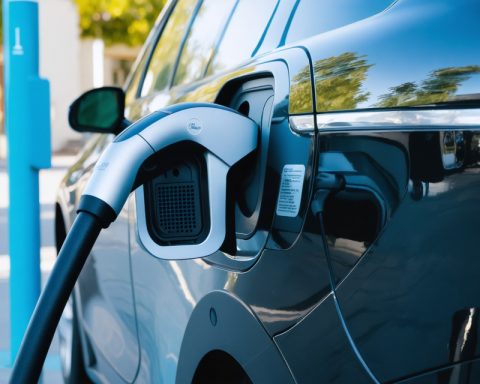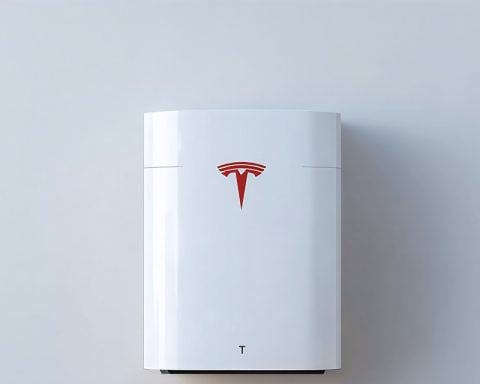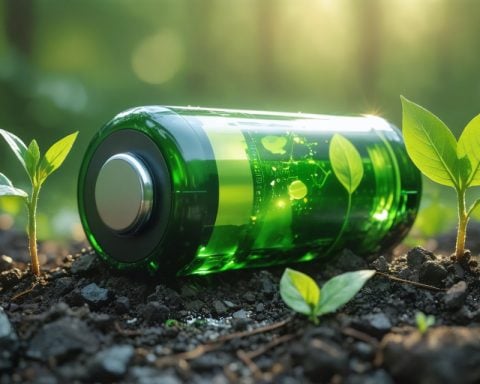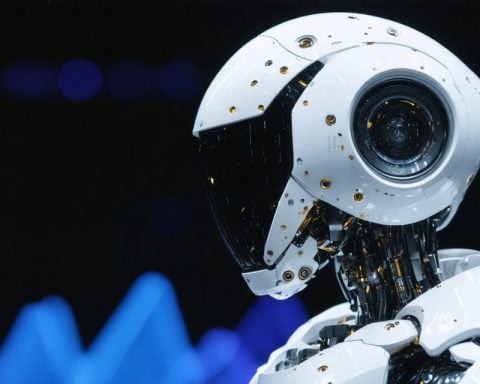- BYD introduces a groundbreaking 60Ah all-solid-state battery, targeting widescale application by 2027 and installation by 2030.
- The competition between solid-state and liquid-state ternary batteries aims to enhance cost-efficiency, particularly in the high-end EV market.
- Sulfide solid-state batteries are expected to be transformative from 2027 to 2029, revolutionizing electric vehicles.
- Lithium iron phosphate batteries will continue offering reliability across all vehicle tiers alongside solid-state advancements.
- AI is set to transform battery research and development, reducing costs through insights from vast data reserves.
- The CASIP collaboration, involving leaders like CATL and BYD, aims to drive academic and industrial progress in battery technology.
- This era marks a pivotal moment for innovation, merging ideas and science to shape an electrified future.
Accelerating into the future, the world of batteries gears up for a seismic shift. BYD, a titan in the electric battery arena, is paving the way with its leap into all-solid-state battery technology. Rolling off the production line is the groundbreaking 60Ah all-solid-state battery, a tantalizing glimpse of what’s to come. Visionary plans are in motion for widescale application by 2027, with full-fledged installation expected after 2030.
Imagine a world where solid-state and liquid-state ternary batteries compete on price, redefining what’s possible in cost-efficiency. Sun Huajun, a leading figure at BYD, reveals a roadmap set to revolutionize electric vehicles, particularly in the high-end market. The period from 2027 to 2029 emerges as a transformative phase, with sulfide solid-state batteries poised to make waves.
Yet, there’s more on the horizon. While solid-state batteries prepare to dominate high-end models, the enduring lithium iron phosphate batteries will persist, offering reliability across all vehicle tiers. Such is the future that Lian Yubo of BYD envisions—one where diverse battery technologies cater to a spectrum of automotive needs.
In a striking twist, artificial intelligence becomes a game-changer, turbocharging battery R&D. Insights from vast data reserves suddenly become accessible, slashing costs dramatically. Meanwhile, a collective force—battery leaders like CATL and BYD—commit to propelling academic and industrial progress via the freshly minted CASIP collaboration.
This dawn of innovation signals a pivotal moment in technology, where the melding of brilliant ideas and cutting-edge science heralds a brighter, electrified future. The road ahead is set ablaze with possibility; the challenge is to keep pace. Here’s to the electric dreams driving tomorrow’s world.
Unlocking the Future: How Solid-State Batteries Will Revolutionize Your Electric Ride
How-To Steps & Life Hacks: Transitioning to Solid-State Batteries
1. Understand Your Vehicle’s Requirements: Before upgrading to a solid-state battery, ensure your vehicle’s electrical system is compatible. Consult your vehicle manufacturer or a certified electrician.
2. Research Available Options: With upcoming advances, look for brands that offer reliable warranties and customer support. Keep an eye on companies like BYD and CATL as they pioneer these technologies.
3. Stay Informed on Installation Practices: Installation may differ from traditional lithium-ion batteries. Engage professionals who understand the specifics of solid-state technology.
4. Investigate Incentives: Some regions may offer financial incentives for switching to more sustainable battery options. Research local government programs.
Real-World Use Cases
– Electric Vehicles (EVs): Solid-state batteries promise greater energy density, enhancing range and reducing weight.
– Portable Electronics: Laptops and smartphones can benefit from increased safety and faster charging times.
– Renewable Energy Storage: Solid-state batteries can offer more efficient and reliable storage solutions for solar and wind energy systems.
Market Forecasts & Industry Trends
The global market for solid-state batteries is expected to grow significantly, reaching over $2 billion by 2030. The drive for longer-lasting, faster-charging batteries is a principal force behind this growth.
Reviews & Comparisons
– Solid-State vs. Lithium-Ion: Solid-state batteries offer increased safety due to the absence of liquid electrolytes, which reduces the chances of leaks and fires. However, cost remains a limiting factor.
– Brands Leading the Charge: Beyond BYD, look to companies like QuantumScape and Solid Power making strides in this arena.
Controversies & Limitations
– Cost and Scalability: Solid-state batteries are still expensive to produce, and mass production remains a challenge.
– Materials Sourcing: The need for rare and high-purity materials poses environmental and ethical concerns.
Features, Specs & Pricing
– Energy Density: Solid-state batteries can potentially hold twice as much energy as lithium-ion batteries.
– Pricing: Currently higher than traditional batteries, but predicted to achieve parity by 2030 as production scales.
Security & Sustainability
– Safety Features: Solid-state batteries are less prone to overheating and fires, making them safer for consumer use.
– Environmental Impact: Improved recyclability and reduced dependency on harsh chemicals signal better sustainability.
Insights & Predictions
– Charging Infrastructure Expansion: As battery technologies advance, charging stations need to support new standards.
– Role of AI: Artificial intelligence will play a pivotal role in optimizing manufacturing processes and developing new battery architectures.
Tutorials & Compatibility
– Installation Guides: Expect detailed manuals and support as solid-state batteries become more widespread.
– Device Compatibility: Ensure compatibility with new or updated charging protocols.
Pros & Cons Overview
Pros:
– Higher energy density
– Increased safety
– Longer life span
Cons:
– Higher initial cost
– Production challenges
– Scaling infrastructure needed
Actionable Recommendations
– Stay Updated: Regularly check on progress from leading companies and align with their release schedules.
– Practice Patience: Expect gradual integration over the next decade, as supply chains and production capabilities mature.
For further information and industry updates, visit BYD and CATL.
By fully understanding solid-state battery technology’s potential and challenges, you can make informed decisions that will benefit your lifestyle and the environment. Embrace the change and drive into the electrifying future!


